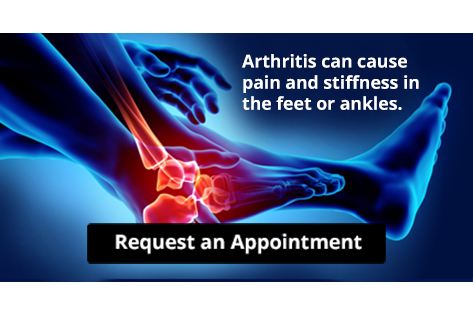Items filtered by date: January 2021
Why is My Heel in Pain?
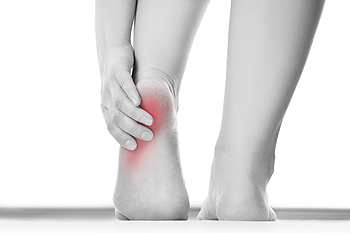 Heel pain can be debilitating, and it has a variety of causes. Because the heel is the first part of the foot to hit the ground when walking, it can bear the weight of the entire body causing pain during prolonged periods of walking and standing. Plantar fasciitis is the most common form of heel pain. This occurs when the plantar fascia, the ligament running along the bottom of the foot connecting the heel to the toes, becomes inflamed and aggravated. Plantar fasciitis pain is at its worst in the morning or after rest, and it usually subsidies throughout the day. Heel spurs, which are abnormal growths of bone on the heel, can also lead to heel pain. These form when calcium deposits build up on the back of the heel. If you are struggling with heel pain, it is important to consult with a podiatrist for a proper diagnosis and treatment method.
Heel pain can be debilitating, and it has a variety of causes. Because the heel is the first part of the foot to hit the ground when walking, it can bear the weight of the entire body causing pain during prolonged periods of walking and standing. Plantar fasciitis is the most common form of heel pain. This occurs when the plantar fascia, the ligament running along the bottom of the foot connecting the heel to the toes, becomes inflamed and aggravated. Plantar fasciitis pain is at its worst in the morning or after rest, and it usually subsidies throughout the day. Heel spurs, which are abnormal growths of bone on the heel, can also lead to heel pain. These form when calcium deposits build up on the back of the heel. If you are struggling with heel pain, it is important to consult with a podiatrist for a proper diagnosis and treatment method.
Many people suffer from bouts of heel pain. For more information, contact one of our podiatrists of Palmetto Podiatry Group of Anderson. Our doctors can provide the care you need to keep you pain-free and on your feet.
Causes of Heel Pain
Heel pain is often associated with plantar fasciitis. The plantar fascia is a band of tissues that extends along the bottom of the foot. A rip or tear in this ligament can cause inflammation of the tissue.
Achilles tendonitis is another cause of heel pain. Inflammation of the Achilles tendon will cause pain from fractures and muscle tearing. Lack of flexibility is also another symptom.
Heel spurs are another cause of pain. When the tissues of the plantar fascia undergo a great deal of stress, it can lead to ligament separation from the heel bone, causing heel spurs.
Why Might Heel Pain Occur?
- Wearing ill-fitting shoes
- Wearing non-supportive shoes
- Weight change
- Excessive running
Treatments
Heel pain should be treated as soon as possible for immediate results. Keeping your feet in a stress-free environment will help. If you suffer from Achilles tendonitis or plantar fasciitis, applying ice will reduce the swelling. Stretching before an exercise like running will help the muscles. Using all these tips will help make heel pain a condition of the past.
If you have any questions please contact our office located in Anderson, SC . We offer the newest diagnostic and treatment technologies for all your foot and ankle needs.
Read more about Heel PainWhy is My Heel in Pain?
 Heel pain can be debilitating, and it has a variety of causes. Because the heel is the first part of the foot to hit the ground when walking, it can bear the weight of the entire body causing pain during prolonged periods of walking and standing. Plantar fasciitis is the most common form of heel pain. This occurs when the plantar fascia, the ligament running along the bottom of the foot connecting the heel to the toes, becomes inflamed and aggravated. Plantar fasciitis pain is at its worst in the morning or after rest, and it usually subsidies throughout the day. Heel spurs, which are abnormal growths of bone on the heel, can also lead to heel pain. These form when calcium deposits build up on the back of the heel. If you are struggling with heel pain, it is important to consult with a podiatrist for a proper diagnosis and treatment method.
Heel pain can be debilitating, and it has a variety of causes. Because the heel is the first part of the foot to hit the ground when walking, it can bear the weight of the entire body causing pain during prolonged periods of walking and standing. Plantar fasciitis is the most common form of heel pain. This occurs when the plantar fascia, the ligament running along the bottom of the foot connecting the heel to the toes, becomes inflamed and aggravated. Plantar fasciitis pain is at its worst in the morning or after rest, and it usually subsidies throughout the day. Heel spurs, which are abnormal growths of bone on the heel, can also lead to heel pain. These form when calcium deposits build up on the back of the heel. If you are struggling with heel pain, it is important to consult with a podiatrist for a proper diagnosis and treatment method.
Many people suffer from bouts of heel pain. For more information, contact one of our podiatrists of Palmetto Podiatry Group of Anderson. Our doctors can provide the care you need to keep you pain-free and on your feet.
Causes of Heel Pain
Heel pain is often associated with plantar fasciitis. The plantar fascia is a band of tissues that extends along the bottom of the foot. A rip or tear in this ligament can cause inflammation of the tissue.
Achilles tendonitis is another cause of heel pain. Inflammation of the Achilles tendon will cause pain from fractures and muscle tearing. Lack of flexibility is also another symptom.
Heel spurs are another cause of pain. When the tissues of the plantar fascia undergo a great deal of stress, it can lead to ligament separation from the heel bone, causing heel spurs.
Why Might Heel Pain Occur?
- Wearing ill-fitting shoes
- Wearing non-supportive shoes
- Weight change
- Excessive running
Treatments
Heel pain should be treated as soon as possible for immediate results. Keeping your feet in a stress-free environment will help. If you suffer from Achilles tendonitis or plantar fasciitis, applying ice will reduce the swelling. Stretching before an exercise like running will help the muscles. Using all these tips will help make heel pain a condition of the past.
If you have any questions please contact our office located in Anderson, SC . We offer the newest diagnostic and treatment technologies for all your foot and ankle needs.
Arthritis Can Cause Pain in the Feet and Ankles
Arthritis Can Cause Pain in the Feet and Ankles
Techniques That May Help to Prevent Falling
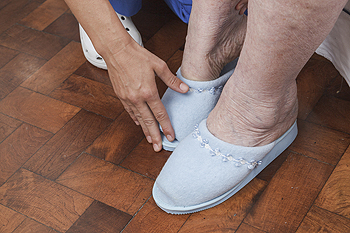 Falling episodes among elderly people is a common occurrence worldwide. Many patients' feet are affected, and may endure a broken foot or sprained ankle as a result of an unexpected fall. Effective prevention techniques can consist of improving lighting in the household and getting regular physical examinations. Maintaining correct medications which may affect your vision can also reduce the risk of falling. Additionally, many patients find it is beneficial to install grab bars in the shower and toilet area, as this provides the necessary stability that can help to prevent falling. If you or a loved one is concerned about how falling can affect the feet, it is suggested that you speak with a podiatrist who can help you with proper prevention techniques.
Falling episodes among elderly people is a common occurrence worldwide. Many patients' feet are affected, and may endure a broken foot or sprained ankle as a result of an unexpected fall. Effective prevention techniques can consist of improving lighting in the household and getting regular physical examinations. Maintaining correct medications which may affect your vision can also reduce the risk of falling. Additionally, many patients find it is beneficial to install grab bars in the shower and toilet area, as this provides the necessary stability that can help to prevent falling. If you or a loved one is concerned about how falling can affect the feet, it is suggested that you speak with a podiatrist who can help you with proper prevention techniques.
Preventing falls among the elderly is very important. If you are older and have fallen or fear that you are prone to falling, consult with one of our podiatrists from Palmetto Podiatry Group of Anderson. Our doctors will assess your condition and provide you with quality advice and care.
Every 11 seconds, an elderly American is being treated in an emergency room for a fall related injury. Falls are the leading cause of head and hip injuries for those 65 and older. Due to decreases in strength, balance, senses, and lack of awareness, elderly persons are very susceptible to falling. Thankfully, there are a number of things older persons can do to prevent falls.
How to Prevent Falls
Some effective methods that older persons can do to prevent falls include:
- Enrolling in strength and balance exercise program to increase balance and strength
- Periodically having your sight and hearing checked
- Discuss any medications you have with a doctor to see if it increases the risk of falling
- Clearing the house of falling hazards and installing devices like grab bars and railings
- Utilizing a walker or cane
- Wearing shoes that provide good support and cushioning
- Talking to family members about falling and increasing awareness
Falling can be a traumatic and embarrassing experience for elderly persons; this can make them less willing to leave the house, and less willing to talk to someone about their fears of falling. Doing such things, however, will increase the likelihood of tripping or losing one’s balance. Knowing the causes of falling and how to prevent them is the best way to mitigate the risk of serious injury.
If you have any questions, please feel free to contact our office located in Anderson, SC . We offer the newest diagnostic and treatment technologies for all your foot care needs.
Read more about Falls PreventionTechniques That May Help to Prevent Falling
 Falling episodes among elderly people is a common occurrence worldwide. Many patients' feet are affected, and may endure a broken foot or sprained ankle as a result of an unexpected fall. Effective prevention techniques can consist of improving lighting in the household and getting regular physical examinations. Maintaining correct medications which may affect your vision can also reduce the risk of falling. Additionally, many patients find it is beneficial to install grab bars in the shower and toilet area, as this provides the necessary stability that can help to prevent falling. If you or a loved one is concerned about how falling can affect the feet, it is suggested that you speak with a podiatrist who can help you with proper prevention techniques.
Falling episodes among elderly people is a common occurrence worldwide. Many patients' feet are affected, and may endure a broken foot or sprained ankle as a result of an unexpected fall. Effective prevention techniques can consist of improving lighting in the household and getting regular physical examinations. Maintaining correct medications which may affect your vision can also reduce the risk of falling. Additionally, many patients find it is beneficial to install grab bars in the shower and toilet area, as this provides the necessary stability that can help to prevent falling. If you or a loved one is concerned about how falling can affect the feet, it is suggested that you speak with a podiatrist who can help you with proper prevention techniques.
Preventing falls among the elderly is very important. If you are older and have fallen or fear that you are prone to falling, consult with one of our podiatrists from Palmetto Podiatry Group of Anderson. Our doctors will assess your condition and provide you with quality advice and care.
Every 11 seconds, an elderly American is being treated in an emergency room for a fall related injury. Falls are the leading cause of head and hip injuries for those 65 and older. Due to decreases in strength, balance, senses, and lack of awareness, elderly persons are very susceptible to falling. Thankfully, there are a number of things older persons can do to prevent falls.
How to Prevent Falls
Some effective methods that older persons can do to prevent falls include:
- Enrolling in strength and balance exercise program to increase balance and strength
- Periodically having your sight and hearing checked
- Discuss any medications you have with a doctor to see if it increases the risk of falling
- Clearing the house of falling hazards and installing devices like grab bars and railings
- Utilizing a walker or cane
- Wearing shoes that provide good support and cushioning
- Talking to family members about falling and increasing awareness
Falling can be a traumatic and embarrassing experience for elderly persons; this can make them less willing to leave the house, and less willing to talk to someone about their fears of falling. Doing such things, however, will increase the likelihood of tripping or losing one’s balance. Knowing the causes of falling and how to prevent them is the best way to mitigate the risk of serious injury.
If you have any questions, please feel free to contact our office located in Anderson, SC . We offer the newest diagnostic and treatment technologies for all your foot care needs.
Environments Toenail Fungus May Be Found
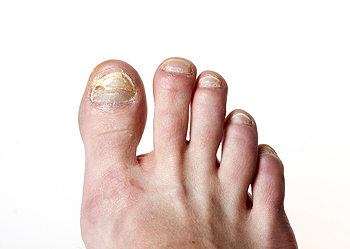 Toenail fungus is a common ailment around the world. The symptoms that many patients experience include yellow, thickened, and brittle toenails. Toenail fungus is contagious, and it is caused by a fungus that lives and thrives in warm and moist environments. These can consist of shower room floors, public swimming pools, and surrounding areas. Possible prevention methods can include wearing appropriate shoes while frequenting these areas, and it is important to refrain from sharing shoes, socks, and towels. If you have developed this condition, it is suggested that you speak with a podiatrist who can discuss treatment options with you.
Toenail fungus is a common ailment around the world. The symptoms that many patients experience include yellow, thickened, and brittle toenails. Toenail fungus is contagious, and it is caused by a fungus that lives and thrives in warm and moist environments. These can consist of shower room floors, public swimming pools, and surrounding areas. Possible prevention methods can include wearing appropriate shoes while frequenting these areas, and it is important to refrain from sharing shoes, socks, and towels. If you have developed this condition, it is suggested that you speak with a podiatrist who can discuss treatment options with you.
For more information about treatment, contact one of our podiatrists of Palmetto Podiatry Group of Anderson. Our doctors can provide the care you need to keep you pain-free and on your feet.
Toenail Fungus Treatment
Toenail fungus is a condition that affects many people and can be especially hard to get rid of. Fortunately, there are several methods to go about treating and avoiding it.
Antifungals & Deterrence
Oral antifungal medicine has been shown to be effective in many cases. It is important to consult with a podiatrist to determine the proper regiment for you, or potentially explore other options.
Applying foot powder on the feet and shoes helps keep the feet free of moisture and sweat.
Sandals or open toed shoes – Wearing these will allow air movement and help keep feet dry. They also expose your feet to light, which fungus cannot tolerate. Socks with moisture wicking material also help as well.
If you have any questions please feel free to contact our office located in Anderson, SC . We offer the newest diagnostic tools and technology to treat your foot and ankle needs.
Read more about Treating Toenail FungusEnvironments Toenail Fungus May Be Found
 Toenail fungus is a common ailment around the world. The symptoms that many patients experience include yellow, thickened, and brittle toenails. Toenail fungus is contagious, and it is caused by a fungus that lives and thrives in warm and moist environments. These can consist of shower room floors, public swimming pools, and surrounding areas. Possible prevention methods can include wearing appropriate shoes while frequenting these areas, and it is important to refrain from sharing shoes, socks, and towels. If you have developed this condition, it is suggested that you speak with a podiatrist who can discuss treatment options with you.
Toenail fungus is a common ailment around the world. The symptoms that many patients experience include yellow, thickened, and brittle toenails. Toenail fungus is contagious, and it is caused by a fungus that lives and thrives in warm and moist environments. These can consist of shower room floors, public swimming pools, and surrounding areas. Possible prevention methods can include wearing appropriate shoes while frequenting these areas, and it is important to refrain from sharing shoes, socks, and towels. If you have developed this condition, it is suggested that you speak with a podiatrist who can discuss treatment options with you.
For more information about treatment, contact one of our podiatrists of Palmetto Podiatry Group of Anderson. Our doctors can provide the care you need to keep you pain-free and on your feet.
Toenail Fungus Treatment
Toenail fungus is a condition that affects many people and can be especially hard to get rid of. Fortunately, there are several methods to go about treating and avoiding it.
Antifungals & Deterrence
Oral antifungal medicine has been shown to be effective in many cases. It is important to consult with a podiatrist to determine the proper regiment for you, or potentially explore other options.
Applying foot powder on the feet and shoes helps keep the feet free of moisture and sweat.
Sandals or open toed shoes – Wearing these will allow air movement and help keep feet dry. They also expose your feet to light, which fungus cannot tolerate. Socks with moisture wicking material also help as well.
If you have any questions please feel free to contact our office located in Anderson, SC . We offer the newest diagnostic tools and technology to treat your foot and ankle needs.
Preventing Blisters While Running
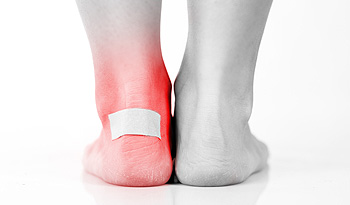 Blisters on the feet are fluid-filled bubbles of raised skin that are usually caused by repetitive friction over an area of the foot. If you are a runner, you have likely experienced blisters. The discomfort and pain associated with them can make running difficult. Fortunately, there are measures that you can take to prevent blisters. These include ensuring that you wear properly fitted shoes and moisture-wicking socks to keep your feet comfortable and dry and to reduce friction as you run. You may also consider applying tape or wearing a pad over areas that tend to blister. Applying a small amount of lubricant to these areas can also help reduce friction. For more information about blister prevention, please consult with a podiatrist.
Blisters on the feet are fluid-filled bubbles of raised skin that are usually caused by repetitive friction over an area of the foot. If you are a runner, you have likely experienced blisters. The discomfort and pain associated with them can make running difficult. Fortunately, there are measures that you can take to prevent blisters. These include ensuring that you wear properly fitted shoes and moisture-wicking socks to keep your feet comfortable and dry and to reduce friction as you run. You may also consider applying tape or wearing a pad over areas that tend to blister. Applying a small amount of lubricant to these areas can also help reduce friction. For more information about blister prevention, please consult with a podiatrist.
Blisters are prone to making everyday activities extremely uncomfortable. If your feet are hurting, contact one of our podiatrists of Palmetto Podiatry Group of Anderson. Our doctors can provide the care you need to keep you pain-free and on your feet.
Foot Blisters
Foot blisters develop as a result of constantly wearing tight or ill-fitting footwear. This happens due to the constant rubbing from the shoe, which can often lead to pain.
What Are Foot Blisters?
A foot blister is a small fluid-filled pocket that forms on the upper-most layer of the skin. Blisters are filled with clear fluid and can lead to blood drainage or pus if the area becomes infected.
How Do Blisters Form?
Blisters on the feet are often the result of constant friction of skin and material, usually by shoe rubbing. Walking in sandals, boots, or shoes that don’t fit properly for long periods of time can result in a blister. Having consistent foot moisture and humidity can easily lead to blister formation.
Prevention & Treatment
It is important to properly care for the affected area in order to prevent infection and ease the pain. Do not lance the blister and use a Band-Aid to provide pain relief. Also, be sure to keep your feet dry and wear proper fitting shoes. If you see blood or pus in a blister, seek assistance from a podiatrist.
If you have any questions, please feel free to contact our office located in Anderson, SC . We offer the newest diagnostic and treatment technologies for all your foot care needs.
Read more about Blisters on the FeetPreventing Blisters While Running
 Blisters on the feet are fluid-filled bubbles of raised skin that are usually caused by repetitive friction over an area of the foot. If you are a runner, you have likely experienced blisters. The discomfort and pain associated with them can make running difficult. Fortunately, there are measures that you can take to prevent blisters. These include ensuring that you wear properly fitted shoes and moisture-wicking socks to keep your feet comfortable and dry and to reduce friction as you run. You may also consider applying tape or wearing a pad over areas that tend to blister. Applying a small amount of lubricant to these areas can also help reduce friction. For more information about blister prevention, please consult with a podiatrist.
Blisters on the feet are fluid-filled bubbles of raised skin that are usually caused by repetitive friction over an area of the foot. If you are a runner, you have likely experienced blisters. The discomfort and pain associated with them can make running difficult. Fortunately, there are measures that you can take to prevent blisters. These include ensuring that you wear properly fitted shoes and moisture-wicking socks to keep your feet comfortable and dry and to reduce friction as you run. You may also consider applying tape or wearing a pad over areas that tend to blister. Applying a small amount of lubricant to these areas can also help reduce friction. For more information about blister prevention, please consult with a podiatrist.
Blisters are prone to making everyday activities extremely uncomfortable. If your feet are hurting, contact one of our podiatrists of Palmetto Podiatry Group of Anderson. Our doctors can provide the care you need to keep you pain-free and on your feet.
Foot Blisters
Foot blisters develop as a result of constantly wearing tight or ill-fitting footwear. This happens due to the constant rubbing from the shoe, which can often lead to pain.
What Are Foot Blisters?
A foot blister is a small fluid-filled pocket that forms on the upper-most layer of the skin. Blisters are filled with clear fluid and can lead to blood drainage or pus if the area becomes infected.
How Do Blisters Form?
Blisters on the feet are often the result of constant friction of skin and material, usually by shoe rubbing. Walking in sandals, boots, or shoes that don’t fit properly for long periods of time can result in a blister. Having consistent foot moisture and humidity can easily lead to blister formation.
Prevention & Treatment
It is important to properly care for the affected area in order to prevent infection and ease the pain. Do not lance the blister and use a Band-Aid to provide pain relief. Also, be sure to keep your feet dry and wear proper fitting shoes. If you see blood or pus in a blister, seek assistance from a podiatrist.
If you have any questions, please feel free to contact our office located in Anderson, SC . We offer the newest diagnostic and treatment technologies for all your foot care needs.
